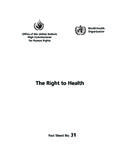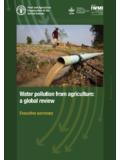Transcription of Novel Coronavirus(2019-nCoV) - World Health Organization
1 Novel Coronavirus(2019-nCoV). situation Report - 13. Data as reported by 2 February 2020*. HIGHLIGHTS situation IN NUMBERS. total and new cases in last 24. hours No new countries have reported cases of 2019-nCoV acute respiratory disease in the last 24 hours. Globally 14557 confirmed (2604 new). WHO is receiving information about cases from a number of countries. As additional details become known, WHO requests countries to share information China in a timely manner as specified in the guidance on Global Surveillance for human 14411 confirmed (2590 new). 2110 severe (315 new). infection with Novel coronavirus (2019-nCoV). 304 deaths (45 new). The first death has been reported outside of China, in the Philippines.
2 The patient was a close contact of the first patient confirmed in the Philippines. Outside of China 146 confirmed (14 new). Due to the high demand for timely and trustworthy information about 2019- 23 countries nCoV WHO technical risk communication and social media teams have been 1 death working closely to track and respond to myths and rumours. WHO RISK ASSESSMENT. China Very High Regional Level High Global Level High Figure 1. Countries, territories or areas with reported confirmed cases of 2019-nCoV, 2 February 2020. *The situation report includes information reported to WHO Geneva by 10 AM. TECHNICAL FOCUS: Risk communication and community engagement Managing the 2019-nCoV infodemic'.
3 The 2019-nCoV outbreak and response has been accompanied by a massive infodemic' - an over-abundance of information some accurate and some not that makes it hard for people to find trustworthy sources and reliable guidance when they need it. Due to the high demand for timely and trustworthy information about 2019-nCoV, WHO technical risk communication and social media teams have been working closely to track and respond to myths and rumours. Through its headquarters in Geneva, its six regional offices and its partners, the Organization is working 24 hours a day to identify the most prevalent rumours that can potentially harm the public's Health , such as false prevention measures or cures.
4 These myths are then refuted with evidence-based information. WHO is making public Health information and advice on the 2019-nCoV, including myth busters, available on its social media channels (including Weibo, Twitter, Facebook, Instagram, LinkedIn, Pinterest) and website. Country risk communication and community engagement (RCCE) preparedness and response Country risk communication and community engagement (RCCE) is a critical public Health intervention in all countries. Countries should prepare to communicate rapidly, regularly and transparently with the population. All countries should prepare existing public Health communication networks, media and community engagement staff to be ready for a possible case, and for the appropriate response if this happens.
5 Countries should coordinate communications with other response organizations and include the community in response operations. WHO stands ready to coordinate with partners to support countries in their communication and community engagement response. Ensuring a people-centered response to 2019-nCoV. An expanding group of global response Organization such as the United Nations Children's Fund (UNICEF) and the International Federation of Red Cross and Red Crescent Societies (IFRC) are coordinating efforts with WHO to ensure that biomedical recommendations can be applied at the community level. These organizations are active at the global, regional and country level to ensure that affected populations have a voice and are part of the response.
6 Ensuring that global recommendations and communication are tested, adapted and localized will help countries better control the 2019-nCoV outbreak. SURVEILLANCE. Table 1. Confirmed cases of 2019-nCoV acute respiratory disease reported by provinces, regions and cities in China, 2 February 2020. Province/Region/City Confirmed Cases Hubei 9074. Zhejiang 661. Guangdong 604. Henan 493. Hunan 463. Anhui 340. Jiangxi 333. Chongqing 262. Sichuan 236. Jiangsu 231. Shandong 225. Beijing 183. Shanghai 177. Fujian 159. Shaanxi 116. Guangxi 111. Hebei 104. Yunnan 99. Heilongjiang 95. Liaoning 64. Hainan 63. Shanxi 56. Gansu 45. Tianjin 40. Guizhou 38. Ningxia 28. Inner Mongolia 26.
7 Xinjiang 23. Jilin 21. Hong Kong SAR 14. Taipei 10. Qinghai 9. Macau SAR 7. Xizang 1. Total 14411. Table 2. Countries, territories or areas with reported confirmed cases of 2019-nCoV. Data as of 2 February 2020. WHO Regional Office Country/Territory/Area Confirmed Cases China* 14411. Japan 20. Republic of Korea 15. Western Pacific Viet Nam 7. Singapore 18. Australia 12. Malaysia 8. Cambodia 1. Philippines 2. Thailand 19. Nepal 1. South-East Asia Sri Lanka 1. India 2. United States of America 8. Region of the Americas Canada 4. France 6. Finland 1. Germany 8. Italy 2. European Region Russian Federation 2. Spain 1. Sweden 1. United Kingdom 2. Eastern Mediterranean United Arab Emirates 5.
8 Total Confirmed cases Total 14557. *Confirmed cases in China include cases confirmed in Hong Kong SAR (14 confirmed cases), Macau SAR (7 confirmed cases) and Taipei (10. confirmed cases). Note: Case classifications are based on WHO case definitions for 2019-nCoV. Figure 2: Epidemic curve of 2019-nCoV cases (n=76) identified outside of China, by date of onset of symptoms and travel history, 2 February 2020. Note for figure 2: Of the 146 cases reported outside China, 11 were detected while asymptomatic. For the remaining 135 cases, information on date of onset is available only for the 76 cases presented in the epidemiologic curve. Figure 3: Epidemic curve of 2019-nCoV cases (n=146) identified outside of China, by date of reporting and travel history, 2 February 2020.
9 STRATEGIC OBJECTIVES. WHO's strategic objectives for this response are to: Limit human-to-human transmission including reducing secondary infections among close contacts and Health care workers, preventing transmission amplification events, and preventing further international spread from China*;. Identify, isolate and care for patients early, including providing optimized care for infected patients;. Identify and reduce transmission from the animal source;. Address crucial unknowns regarding clinical severity, extent of transmission and infection, treatment options, and accelerate the development of diagnostics, therapeutics and vaccines;. Communicate critical risk and event information to all communities and counter misinformation.
10 Minimize social and economic impact through multisectoral partnerships. *This can be achieved through a combination of public Health measures, such as rapid identification, diagnosis and management of the cases, identification and follow up of the contacts, infection prevention and control in healthcare settings, implementation of Health measures for travellers, awareness- raising in the population and risk communication. PREPAREDNESS AND RESPONSE. WHO has developed a protocol for the investigation of early cases (the First Few X (FFX) Cases and contact investigation protocol for 2019- Novel coronavirus (2019-nCoV) infection ). The protocol is designed to gain an early understanding of the key clinical, epidemiological and virological characteristics of the first cases of 2019- nCoV infection detected in any individual country, to inform the development and updating of public Health guidance to manage cases and reduce potential spread and impact of infection.

















